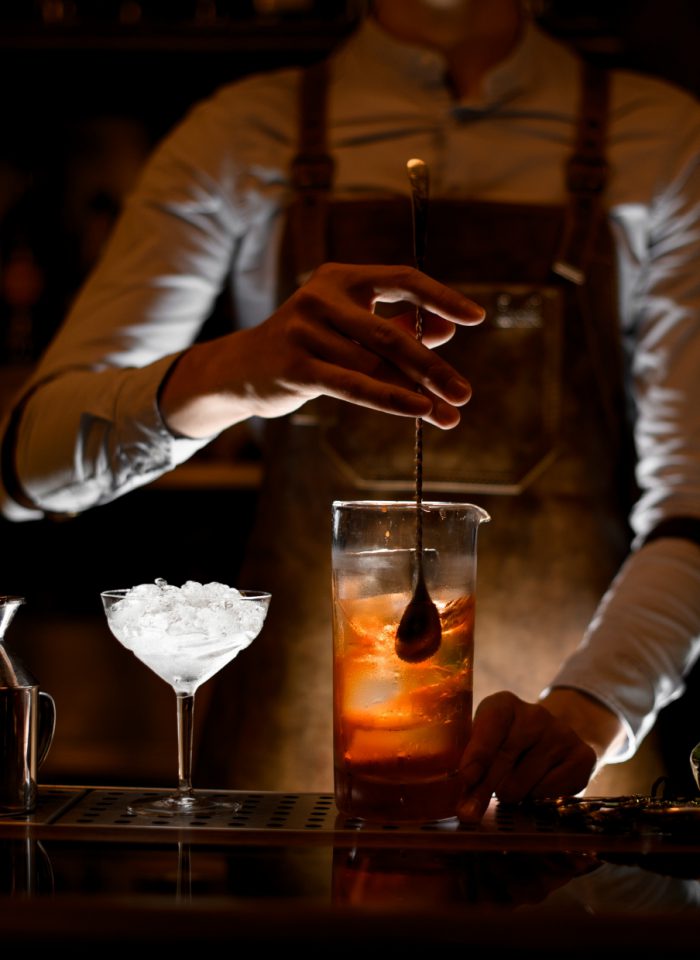Eymeric Bernard : “Brandy goes premium”
There are articles everywhere about the “premiumisation trend” of the brandy market. What is your take on it?
Premiumisation is well underway, but can we already call it a global trend? I think the situation is a bit more nuanced, since we are talking about markets that are very different in terms of maturity. If we consider the Chinese or Indian markets, premiumisation takes the form of growing consumer demand. It corresponds to the emergence of a middle class with a strong appetite for Western brands and for guarantees of high quality. Provenance and know-how –French in particular– have become indispensable. In these markets, while some historic entry-level brands still produce mainly with molasses, brandy is tending towards a real qualitative evolution. We observe, for example, a majority or exclusive use of grapes/wine. Greater attention is also paid to long-term ageing, as in the case of Koya from Changyu.

Which ones, for example ?
There are many examples, but to name two, one from the West and the other from the East, and representing two very different approaches, I would mention Germain-Robin and Copper & Kings. From the West Coast, Germain-Robin is a premium reference. Theirs is a traditional approach with very high standards for quality, the idea being to apply the rigour of the Cognac process to Californian wine. The volumes are quite low, but the success is significant and fully deserved. The story is beautiful too: a man, Hubert Germain-Robin, who left France with his copper still under his arm to create the best brandy in California back in 1982. Copper and Kings was founded in Bourbon Country (Louisville, Kentucky) in 2014 and has opted for a very different approach. Joe Heron made a remarkable entry into the brandy market with the creation of a wine and apple eaux-de-vie distillery and a strong brand infused with rock culture. The name is designed to sound like that of a rock band (Editor’s note: the founder loves Kings of Leon). The visual identity in black and orange –evocative of the copper still– gives a clear and recognisable impression of a craft product. Joe Heron also managed to create a full concept with, for example, the broadcast of a daily rock playlist in the cellars, which remain open to visitors, to “influence the ageing of the brandy”. Of course, the product is also very good, but the brand and storytelling match so well with the values of our time, making it a true pioneer.
Does the premiumisation of brandy in the United States only apply to craft operations with remarkable know-how and a strong personality?
This is no longer the case because these successes that I’ve mentioned – and there are many others – have not gone unnoticed and they have created a movement among the big names. I remember a discussion I had with Ernest Gallo in 2017. He flashed this mischievous little smile when we talked about the anticipated premiumisation of the brandy category. E&J Gallo, the No. 1 brandy brand in the US, was in the process of launching the Argonaut “craft” brandy range and, a few months afterwards, of buying out Germain-Robin. They incorporated the brand, with its very high-quality and old eaux-de-vie inventory. Copper & Kings was also acquired and integrated into Constellation Brands , then no. 2 on the market. This was an even more radical choice by Constellation, as they soon after sold their entry-level brandy brand –Paul Masson – to position themselves exclusively in the premium brandy category. Another good example is Diageo, which launched Ciroc VS, the “French Brandy” version of its grape-based vodka brand.

“Premium brandy will expand to other markets.”
The American market is always a forerunner, and it is quite safe to imagine that this movement will expand throughout the world. Who knows? Premiumisation may even put brandy on the French consumer’s radar. Surprisingly, despite being its birthplace, France has never been a brandy market.
We are therefore no longer at the weak signals stage in the US. Demand is growing strongly, and major producers are watching the category with interest or have already taken some steps towards qualitative and quantitative valorisation.
Which ones, for example ?

The slots are therefore up for grabs on the various premium brandy markets in the coming years. What does a new entrant need in order to grow?
Premium begins with the raw material: the quality of the wine is fundamental, but also the method of distillation, the type of ageing, etc. Specific approaches can make the difference, as in the case of single-varietal brandies or double-barrels ones. If we take the example of single varietals, brandy is interesting in that it can be produced from a wide range of grape varieties. For example, we today produce brandies with Viognier or Chenin Blanc, which was unheard of until recently. Beyond the product itself, the brand plays a major role. The example of Copper & Kings that I mentioned earlier is a testament to this. It takes creative talent, a know-how, an approach, a brand territory, a story. We’ve seen that a strong brand has the potential to transcend the segmentation of spirits categories.
You may also find these articles interesting: Bordeaux Paludate : a new chapter for Lucien Bernard
